#jacques latour
Photo

Jacques Latour is a name associated with the dark underbelly of Tal, an elusive figure whose path many prefer to avoid crossing. But among the select few who pay attention, rumors circulate that he is held in high regard by the Emperor himself, operating as his right hand.
#art#art tag#oc artwork#jacques latour#trsr#the rift shall remember#character introductions for my webcomic!
670 notes
·
View notes
Photo
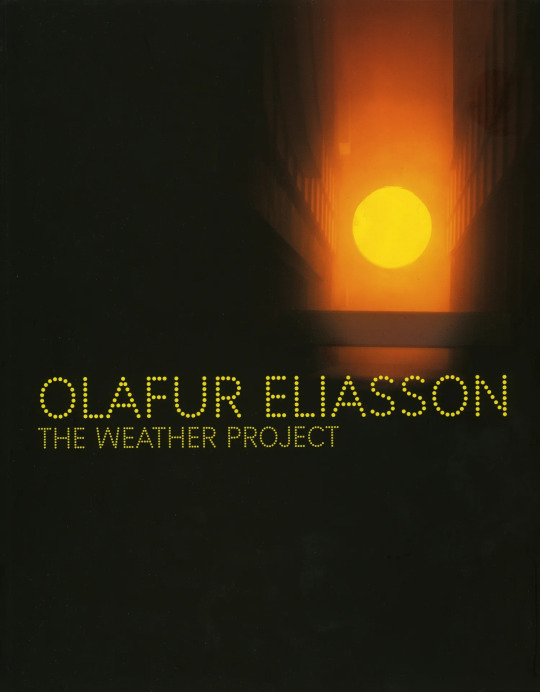
Olafur Eliasson: The Weather Project, Edited by Susan May, Texts by Olafur Eliasson, Jane Burton, Helen Charman, Brian Gray, Sophie Harrowes, Jacques Herzog, Bruno Latour, Doreen Massey, Susan May, Israel Rosenfield, Nicholas Serota, and Dominic Willsdon, Design by Chris Rehberger, Tate Publishing, London 2003 [Exhibition: Turbine Hall, Tate Modern, London, October 16, 2003 – March 21, 2004]
(on the way of Art Books & Ephemera)
#graphic design#art#installation#catalogue#catalog#cover#olafur eliasson#studio olafur eliasson#susan may#jane burton#helen charman#brian gray#sophie harrowes#jacques herzog#bruno latour#doreen massey#israel rosenfield#nicholas serota#dominic willsdon#chris rehberger#tate#tate modern#tate publishing#2000s
28 notes
·
View notes
Text
On this day in cycling history...

November 1st 1962, Trofeo Baracchi:
Jacques Anquetil rode the Trofeo Baracchi, a 111km long two-men time-trial, paired up with his new German teammate Rudi Altig.
Jacques, who had won the TdF that year, but doing so while having a tape worm, was still suffering the effects of that and therefore not in top form.
Altig even told journalists before the start of the race, "Jacques will never ride this event again, because today I am going to make him suffer."
The first 61km were still going good, with the two teammates taking turns setting the pace and overtaking some of the teams that started ahead of them (in the right gif going past an Italian team).


However with 50km to go, Jacques was completely cooked and could no longer go through to do his turns.
According to Jacques himself he couldn't even see Altig's back wheel anymore and could only grit his teeth and hang on. When he felt a wind on his left cheek he would move to the right to get into Altig's slip-stream, when he felt the wind on the right he moved to the left.
Altig was trying to encourage Anquetil but noticed quickly that there was no use, so he resorted to pulling him by his jersey, before finally just pushing him along (which he was allowed to do during a time trial).
The journalist René de Latour wrote:
"Altig was riding at 30mph at the front - and had been doing so for 15 minutes. When Anquetil lost contact, he had to ease the pace, wait for his partner to go by, push him powerfully in the back, sprint to the front again after losing 10 yards in the process, and again settle down to a 30mph stint at the front. Altig did not do this just once but dozens of times."
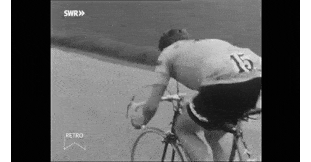


Before riding into the stadium where the race finished they went through a tunnel, at the end of which Anquetil hit a pole.
Altig told him: "Jacques you need to turn left," but the completely delirious Anquetil just went straight ahead and crashed.
(On the last gif you can see Altig giving hand signs to the people around to tell them Anquetil had crashed)


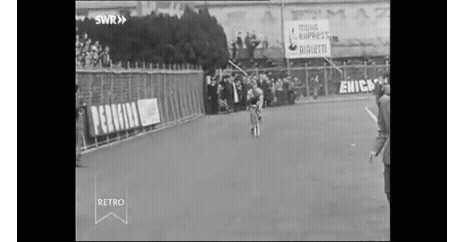
In a daze and completely unaware of the blood streaming down his face Anquetil was taken to the infirmary and later back to the hotel, where it would take two hours for him to come back to himself.
Meanwhile Altig rode his lap of honor alone because, amazingly, the two men had still won the event, having recorded fastest time at the entrance to the track.

Jacques had never been humiliated like that before, but he was also the last one to take things laying down. So two weeks later, during a similar event in Baden-Baden he took his revenge.
After the start Jacques came through to open up a lead of five lengths over Altig, who desperately tried and tried to close the gap, but was unable to. And after going flat out for ten kilometres Altig was completely exhausted.
Which was when Anquetil finally allowed him to rejoin, and then rode the rest of the race at the front.
You would think that meant bad blood between Anquetil and Altig, but to the contrary. This lesson Jacques gave to Rudi was to seal a very close friendship between the two that was to last for the rest of Jacques' life.
#cycling history lesson#baracchi trophy 1962#rudi altig#jacques anquetil#cycling history#cycling stuff#cycling
2 notes
·
View notes
Text


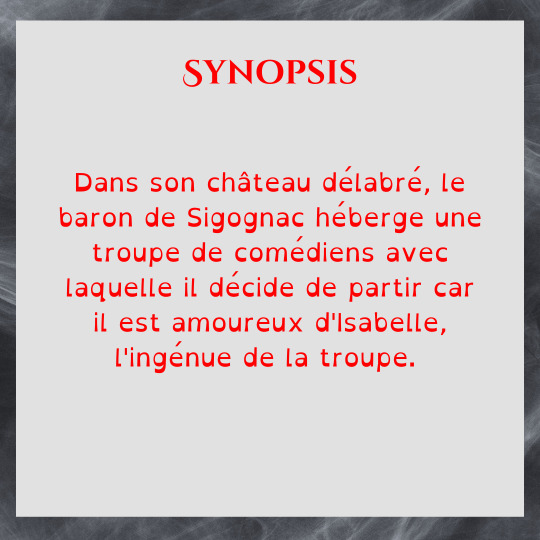


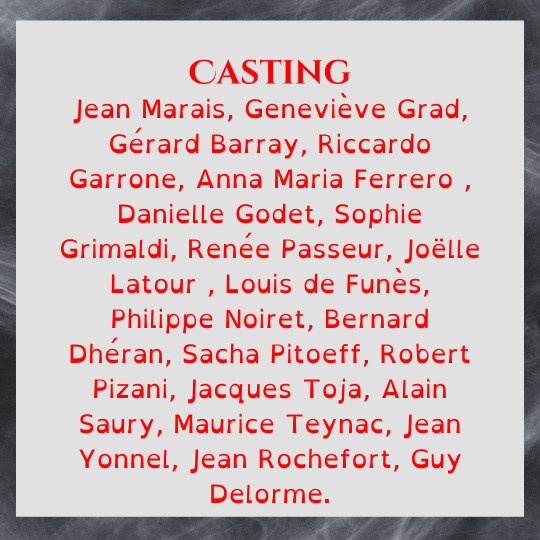
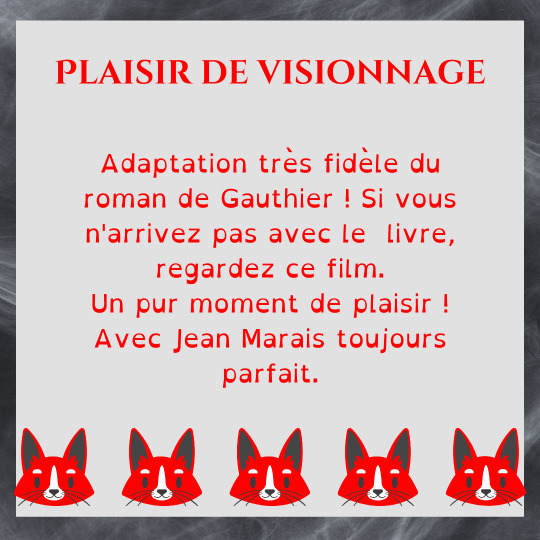


Le Capitaine Fracasse.
1961.
Réalisation : Pierre Gaspard-Huit.
Scénariste : Pierre Gaspard-Huit et Albert Vidalie.
Casting : Jean Marais, Geneviève Grad, Gérard Barray, Riccardo Garrone, Anna Maria Ferrero , Danielle Godet, Sophie Grimaldi, Renée Passeur, Joëlle Latour , Louis de Funès, Philippe Noiret, Bernard Dhéran, Sacha Pitoeff, Robert Pizani, Jacques Toja, Alain Saury, Maurice Teynac, Jean Yonnel, Jean Rochefort, Guy Delorme.
Synopsis :
Dans son château délabré, le baron de Sigognac héberge une troupe de comédiens avec laquelle il décide de partir car il est amoureux d'Isabelle, l'ingénue de la troupe. Bretteur à la fine épée et saltimbanque par amour, il se fait appeler sur scène le « Capitaine Fracasse ». Mais le duc de Vallombreuse, devenu le rival amoureux de Sigognac, est prêt à tout pour se débarrasser de lui et ravir Isabelle.
Plaisir de Visionnage :
Adaptation très fidèle du roman de Gauthier ! Si vous n'arrivez pas avec le livre, regardez ce film.
Un pur moment de plaisir ! Avec Jean Marais toujours parfait.
Note : 5 chats.
Disponibilité :
Existe en DVD.
Bonus Point Chat :
Le Baron a un chat, comme dans le livre !
Plus un chien et un cheval.
Note : 3 chats.
3 notes
·
View notes
Text

Selingan
"Latour, Lacan, Zizek"
Tidak ada modernitas, tidak ada budaya. Lantas yang ada apa? Prancis memang tidak pernah berhenti mengejutkan saya. Sebagai penggemar Prancis, dapat dikatakan saya anak baru di dunia perpenggemaran ini. Saya fanboi Prancis.
Karena anak baru, saya masih terus terkejut dengan pernyataan-pernyataan yang meluncur dari isi pikiran para filsuf Prancis.
Sayangnya, di tulisan ini tidak bisa seratus persen Prancis, karena pernyataan Bruno Latour di atas akan saya tabrakkan dengan kritik Slavoj Zizek ke Jacques Lacan tentang "synthome", homolog semena-mena yang dilakukan Jacques Lacan pada ajaran Karl Marx.
Seperti kita tahu, Jacques Lacan adalah seorang psikiater dan psikoanalis, itu artinya dia memiliki kekuatan (power) yang amat besar, untuk tidak mengatakan "terbesar", sebab memahami ilmu alam dan bekerja sebagai laki-laki berkulit putih yang memahami ilmu alam, dan tidak sekadar ilmu alam, melainkan ilmu kejiwaan, Lacan tidak bisa menafikan sangkaan bahwa dia bisa saja mengarang apapun untuk menjustifikasi ajarannya.
Ini yang kemudian di-point out oleh Zizek. Dalam buku "The Sublime Object of Ideology", Zizek mengkritik penggunaan kata "synthome" yang disangkakan ke Lacan oleh Zizek sendiri sebagai "Homolog" yang semena-mena. Apa maksudnya? Homolog harus dilakukan pada dua objek atau lebih yang apple to apple. Jikalau tidak, ia menjadi justifikasi kebenaran.
Kebohongan ilmiah ini lah yang membuat Bruno Latour, seorang pemikir abad ke-20 di bidang filsafat teknologi, cocok kita sempalkan ke kritik Zizek terhadap Lacan.
Latour bilang, di buku "We Have Never Been Modern" (1991), tidak itu yang namanya budaya karena tidak ada yang namanya zaman modern. Memang tidak mudah memahami ini karena kita adalah warga negara berkembang, tapi tidak mudah artinya kita hanya butuh waktu sedikit lebih lama dibanding warga negara dunia kedua untuk pada akhirnya manggut-manggut sama kritak-kritik para Europeans.
-
Bagaimana hubungan Latour dengan Lacan? Latour lahir tahun 1947, setelah perang dunia kedua selesai dan Lacan tahun 1901, sebelum perang dunia pertama dimulai. PR banget mencari titik temu yang homolog di antara keduanya.
No worries! Dalam setiap PR selalu ada solusi. Latour mengatakan 2 (dua) hal:
1. Zaman modern itu tidak ada, artinya kita tidak pernah menjadi manusia yang modern.
2. Budaya itu tidak ada (dan karena inilah kita tidak pernah menjadi manusia yang modern).
Di sini lah kita menemukan homolog antara dua pernyataan Latour dengan dua pernyataan Lacan tentang ajaran Karl Marx yang ia rangkum dalam sebuah kata sakti yaitu "synthome".
Apa itu? "Synthome" memiliki banyak makna dan cara melakukan homolog adalah dengan mengambil 2 (dua) saja:
1. Gejala individu yang memiliki kejiwaan yang menolak kebudayaan
2. Gejala sosial yang menciptakan individu yang memiliki kejiwaan yang menolak kebudayaan
Nah, di mana kah masalah kedua pernyataan ini? Kalau di dalam dirinya, sih, (das ding, an sich) tidak ada, ya namanya justifikasi, mana mungkin terdapat kontradiksi internal. Tapi, kalau kita melihat dari sudut pandang Marxist seperti Slavoj Zizek, filsuf asal Slovenia yang sekarang mengajar di European Graduate School, dan juga filsuf selebritas, kita dapat menyimpulkan bahwa "synthome"-nya Lacan itu tidak ilmiah, pseudo-ilmiah, dan ini sebuah kejahatan pendidikan juga, lho. Kalau dibiarkan begitu saja ajaran pak psikiater dan psikoanalis Jacques Lacan tanpa didampingi kritik sosial dan ideologi a la Slavoj Zizek, bukan hanya dampaknya buruk bagi nasib pendidikan kita di Indonesia secara umum, tapi juga kita jadi tidak mampu mengenali diri sendiri karena ya, mau gimana, psikologi modern ciptaan Sigmund Freud didistorsi oleh Jacques Lacan, bahkan dia memberi lapisan etika pada ajaran Sigmund Freud ("Seminar VII: Ethics of Psychoanalysis ") seolah tanpanya ilmu dan tentunya beserta sosok Sigmund Freud menjadi tidak etis. Wow!
-
3 notes
·
View notes
Text
names, mostly surnames (1)
let me apologise for this partial list of names in the library, titles available on request...
, Adorno, horkheimer, anderson, aristotle, greta adorno, marcuse, agamben, acampora and acampora, althussar, lajac kovacic, eric alliez, marc auge, attali, francis bacon (16th c), aries, aries and bejin, alain badiou, beckett, hallward, barnes, bachelard, bahktin, volshinov, baudrillard, barthes, john beattie, medvedev, henri bergson, Jacques Bidet, berkman, zybmunt bauman, burgin, baugh, sam butler, ulrich beck, andrew benjamin and peter osbourne, walter benjamin, ernest bloch, blanchot, bruzins, bonnet, karin bojs, bourdieu, j.d. bernal, goldsmith, benveniste, braidotti, brecht, burch, victor serge, andre breton, judith butler, malcolm bull, stanley cohen, john berger, etienne balibar, david bohm, gans blumenberg, martin buber, christopher caudwell, micel callon, albert camus, agnes callard, castoridis, claudio celis bueno, carchedi and roberts, Marisol de la cadena, mario blaser, nancy cartwright, manual castells, mark currie, collingwood, canguilhem, mario corti, stuart hall, andrew lowe, paul willis, coyne, stefan collini, varbara cassin, helene cixous, coward and ellis, clastres, carr, cioren, irving copi, cassirer, carter and willians, margeret cohen, Francoise dastur, guy debord, agnes martin, michele bernstein, alice, lorraine dastun, debaise, Gilles Deleuze, deleuze and gattari, guattari, parnet, iain mackenzie, bignall, stivale, holland, smith, james williams, zourabichvili, paul patton, kerslake, schuster, bogue, bryant, anne sauvagnargues, hanjo berresen, frida beckman, johnson, gulliarme and hughes, valentine moulard-leonard, desai, dosse, duttman, d’amico, benoit peters, derrida, hinca zarifopol-johnston, sean gaston, discourse, mark poster, foucault, steve fuller, markus gabrial, rosenbergm milchamn, colin jones, van fraasen, fekete, vilem flusser, flahault, heri focillon, rudi visker, ernst fischer, fink, faye, fuller, fiho, marco bollo, hans magnus enxensberger, leen de bolle, canetti, ilya enrenberg, thuan, sebastion peake, mervyn peake, robert henderson, reimann, roth, bae suah, yabouza, marco bellatin, cartarescu, nick harkaway, chris norris, deLanda, regis debray, pattern and doniger, soame jynens, bernard williams, descartes, anne dufourmanteille, michelle le doeuff, de certaeu , deligny, Georges Dumezil, dumenil and levy, bernard edelman, victorverlich, berio, arendt, amy allen, de beauvior,hiroka azumi, bedau and humphreys, beuad, georges bataille, caspar henderson, chris innes, yevgeny zamyatin, louis aragon, italo calvino, pierre guirard, trustan garcia, rene girard, paul gilroy, michal gardner, andre gorz, jurgan gabermas, martin gagglund, beatrice hannssen, jean hyppolyte, axel honneth, zizek and crickett, stephen heath, calentin groebner, j.b.s. haldane, ian hacking, david hakken, hallward and oekken, haug, harman, latour, arnold hauser, hegel, pippin, pinksrd, michel henry, louis hjelmslev, gilbert hardin, alice jardine, karl jaspers, suzzane kirkbright, david hume, thomas hobbes, barry hindus, paul hirst, hindess and hirst, wrrner hamacher, bertrand gille, julien huxley, halavais, irigaray, ted honderich, julia kristeva, leibnitz, d lecourt, lazzaroto, kluge and negt, alexander kluge, sarah kofman, alexandre kojeve, kolozoya, keynes, richard kangston, ben lehman, kant, francous jullien, fred hameson, sntonio rabucchi, jaeggi, steve lanierjones, tim jackson, jakobson, joeseph needham, arne de boever, marx and engels, karl marx, frederick engels, heinrich, McLellen , maturana and varuna, lem, lordon, jean jacques-lecercle, malabou, marazzi, heiner muller, mary midgley, armand matterlart, ariel dorfman, matakovsky, nacneice, lucid, victor margolis, narco lippi, glen mazis, nair, william morris, nabis, jean luc nancy, geoffrey nash, antonio negri, negri and hardt, hardt, keith ansell pearson, pettman, william ruddiman, rheinberger, andre orlean, v.i. vernadsky, rodchenko, john willet, tarkovsky, william empson, michel serres, virillio, semiotexte, helmut heiseenbuttel, plessner, pechaux, raunig, retort, saito, serres, dolphin, maria assad, spinoza, bernard sharratt, isabelle stengers, viktor shklovsky, t. todorov, enzo traverso, mario tronti, todes, ivan pavlov, whitehead, frank trentmann, trubetzkoy, rodowink, widderman, karl wittfogel, peter handke, olivier rolin, pavese, robert walser, petr kral, von arnim, sir john mennis, ladies cabinet, samuel johnson, edmund spenser, efy poppy, yoko ogawa, machado, kaurence durrell, brigid brophy, a. betram chandler, maria gabriella llansol, fowler, ransmayr, novick, llewellyn, brennan, sean carroll, julien rios, pintor, wraxall, jaccottet, tabucchi, iain banks, glasstone, clarice lispector, murakami, ludmilla petrushevskaya, motoya, bachmann, lindqvist, uwe johnson, einear macbride, szentkuthy, vladislavic, nanguel, mathias enard, chris tomas, jonathan meades, armo schmidt, charles yu, micheal sorkin, vilas- matas, varesi, peter weiss, stephenson, paul legrande, virginie despentes, pessoa, brin, furst, gunter trass, umberto eco, reid, paul,klee, mario levero, hearn, judith schalansky, moorhead, margert walters, rodchenko and popova, david king, alisdair gray, burroughs, ben fine, paul hirst, hindess, kapuscinski, tchaikovsky, brooke-rose, david hoon kim, helms, mahfouz, ardret, felipe fernandez-armesto, young and tagomon, aronson, bonneuil and fressoz, h.s. bennett, amy allen, bruckner brown, honegger, bernhard, warren miller, albert thelen, margoy bennett, rose macauley, nenjamin peret, sax rohmer, angeliki, bostrom, phillip ball, the invisible commitee, bataille and leiris, gregory bateson, michelle barrett and mary mcintosh, bardini, bugin, mcdonald, kaplan, buck-moores, chesterman and lipman, berman, cicero, chanan, chatelet, helene cixous, iain cha,bers, smirgel, norman clark, caird, camus, clayre, chomsky, critchley, curry, swingewood, luigi luca cavelli-sforza, clark, esposito, doerner, de duve, alexander dovzhenko, donzelot, dennet, doyle, burkheim, de camp, darwin, dawkins, didi-huberman, dundar, george dyson, berard deleuze, evo, barbara ehrenrich, edwards, e isenstein, ebeking, economy and society, esposito, frederick gross, david edgeerton, douglas, paul,feyerband, jerry fodor, gorrdiener, tom forester, korsgaard, fink, floridi, elizabeth groscz, pierre francastel, jane jacobs, francois laplantinee, gould, galloway, goux, godel, grouys, genette, gil, kahloo, giddens, martin gardner, gilbert and dubar, hobbes, herve, golinski, grotowski, glieck, hayles, heidegger, huxley, eric hobsbawn, jean-louis hippolyte, phillip hoare, tim jordan, david harvey, hawking, hoggart, rosemary jackson, myerson, mary jacobus, fox keller, illich, sarah fofman, sylvia harvey, john holloway, han, jaspers, yuk hui, pierre hadot, carl gardner, william james, bell hooks, edmond jabes, kierkegaard, alexander keen, kropotkin, tracy kidder, mithen, kothari and mehta, lind, c. joad, bart kosko, kathy myers, kaplan, luce irigaraay, patrick ke iller, kittler, catherine belsey, kmar, klossowski, holmes, kant, stanton, ernesto laclau, jenkins, la mouffe, walter john williams, adam greenfield, susan greenfield, paul auster, viet nguyen, jeremy nicholson, andy weir, fred jameson, lacoue-labarthe, bede, jane gallop, lacan, wilden, willy ley, henri lefebvre, rob sheilds, sandra laugier, micheal lowy, barry levinson, sylvain lazurus, lousardo, leopardo, jean-francois lyotard, jones, lewontin, steve levy, alice in genderland, laing, lanier, lakatos, laurelle, luxemburg, lukacs, jarsh, james lovelock, ideologu and consciousness, economy and society, screen, deleuze studies, deleuze and guattari studies, bruno latour, david lapoujade, stephen law, primo levi, levi-strauss, emmanuel levinas, viktor schonberger, pierre levy, gustav landaur, robin le poidevin, les levidow, lautman, david cooper, serge leclaire, catherine malabou, karl kautsky, alice meynall, j.s. mill, montainge, elaine miller, rosa levine-meyer, jean luc marion, henri lefebrve, lipovetsky, terry lovell, niklas luhmann, richard may, machiavelli, richard mabey, john mullzrkey, meyerhold, edward braun, magri, murray, nathanial lichfield, noelle mcafee, hans meyer, ouspensky, lucretius, asa briggs, william morris, christian metz, laura mulvey, len masterman, karl mannheim, louis marin, alaister reynolds, antonio munoz molina, FRAZER, arno schmidt, dinae waldman, mark rothko, cornwall, micheal snow, sophie henaff, scarlett thomas, matuszewski, lillya brik, rosamond lehman , morris and o’conner, nina bawden, cora sandel, delafield, storm jameson, lovi , rachel ferguson, stevie smith, pat barker, miles franklin, fay weldon, crista wolff, grace paley, v. woolf, naomi mitchinson, sheila rowbotham, e, somerville and v ross, sander marai, jose saramago, strugatsky, jean echenoz, mark robso, vladimir Vernadsky, chris marker, Kim Stanley Robinson, mario leverdo, r.a. lafferty, martin bax, mcaulay, tatyana tolstaya, colinn kapp, jonathan meades, franco fortini, sam delany, philip e high, h.g. adler, feng menglong, adam thorpe, peeter nadas, sam butler, narnold silver, deren, joanna moorhead, leonara carrington, de waal, hartt, botticelli, charbonneau, casco pratolini, murakami, aldiss, guidomorselli, ludmilla petrushevskaya, ,schulz, de andrade, yasushi. inoue, renoir, amelie nothomb, ken liu, prynne, ANTIONE VOLODINE, luc brasso, angela greene, dorothea tanning, eric chevillard, margot bennett w.e. johns, conan doyle, samuel johnson, herge, coutine-denamy, sterling, roubaud, sloan, meiville, delarivier manley, andre norton, perec, edward upward, tom mcCarthy, magrinya, stross, eco, godden, malcolm lowry, derekmiller, ismail kadare, scott lynch, chris fowler, perter newman, suzzana clarke, paretky, juliscz balicki, stanislaw maykowski, rajaniemi, william morris, c.k. crow, ueys, oldenburg, mssrc chwmot, will pryce, munroe, brnabas and kindersley, tromans, lem, zelazny, mitchinson, harry Harrison, konstantin tsiolkovsky, flammerion, harrison, arthur c clarke, carpenter, john brunner, anhony powell, ted white, sheckley, kristof, kempowski, shingo, angelica groodischer, rolin, galeanom dobin, richard holloway, pohl and kornbulth, e.r. eddison, ken macleodm aldiss, dave hutchinson, alfred bester, budrys, pynchon, kurkov, wisniewski_snerg, , kenji miyazawa, dante, laidlaw, paek nam_nyong, maspero, colohouquon, hernandez, christina hesselholdt, claude simon, bulgaakov, simak, verissimo, sorokin, sarraute, prevert, celan, bachmann, mervin peake, olaf stapledon, sa rohmer, robert musil, le clezio, jeremy cooper, zambra, giorgio de chirico, mjax frisch, gawron, daumal, tomzza, canetti, framcois maspero, de quincy, defoe, green,, greene, marani, bellatin, khury, tapinar,, richmal crompton, durrenmat, fritz, quintane, volponi, nanni balestrini, herrera, robert walser, duras, peter stamm, m foster, lan wright, their theotokism agustn de rojas, paul eluard, sturgeon, hiromi kawakomi, sayaka murata, wolfgang hilbig, hmilton, z zivkovic, gersson, mallo, bird, chaudrey, Toussaint, Can Xue, Lewis Mumford, neitzsche, popper, zizek, scott westerfield, rousseau, lewis munford, tod may, penelope maddy, elaine marks, isabelle courtivron, leroi, massumi, david sterritt, godard, millican and clark, macabe, negri, mauss, maiimon, patrica maccormack, moretti, courtney humphries, monad, moyn, malina, picasso, goldman, dambisa moyo, merleau-ponty, Nicholson, knobe and nichols, poinciore, morris, ovid, ming, nail, thomas more, richard mabey, macfarlane, piscator, louis-stempal, negrastini, moore, jacquline rose, rose and rose, ryle, roszick, rosenburg, ravisson, paul ricoer, rossler, chantl mouffe, david reiff, plato, slater, rowlands, rosa, john roberts, rhan, dubios and rousseau, ronell, jacques ranciere, mallarme, quinodoz, peterpelbert, mary poovey, mackenzie, andrew price, opopper, roger penrose, lu cino parisi, gavin rae, parker and pollack, mirowoski, perniola, postman, panofsky, propp, paschke and rodel, andre pickering, massabuau, lars svenddsen, rosenberg and whyte, t.l.s. sprigger, nancy armstrong, sallis, dale spender, stanislavski, vanessa schwartz, shapin and shaeffer, sally sedgewick, signs, gabriel tarde, charles singer, adam smith, simondon, pascal chablt, combes, jon roffee, edward said, sen, nik farrell fox, sartre, fred emery, scholes, herbert spencer, ruth saw, spinoza, raphael sassower, henry sidgewick, peter singer, katarznya de lazari-radek, piaget, podach, van der post, on fire, one press, melossi and pavarini, pearl and mackenzie, theirry paquot, tanizaki, RHS, stone, richard sennett, graham priest, osborn and pagnell, substance, pedrag cicovacki, schilthuizen, susan sontag, gillian rose, nikolas rose, g rattery taylor, rose, rajan, stuart sim, max raphael, media culture and society, heller- roazen, rid, root, rossi, gramsci, showstack sasson, david roden, adrew ross, rosenvallion, pauliina remes, pkato, peter sloterdijk, tamsin shaw, george simmel, bullock and trombley, mark francis, alain supiot, suvin, mullen and suvin, stroma, maimonides, van vogt, the clouds on unknowing, enclotic, thesis 11, spivack, kate raworth, h.w. richardson, hillial schwartz, stern, rebecca solnit, rowland parker, pickering, lukacs, epicriud, epicetus, lucrtious, aurelies, w.j.oates, thor Hanson, thompson, mabey, sheldrake, eatherley, plato, jeffries, dorothy richardson, arno schmidt, earl derr biggersm mary borden, birrel, arno schmidt, o.a. henty, berhard steigler, victor serge, smith, joyce salisbury, pauer-studer, timpanaro, s helling, schlor, norman and welchman, searle, emanuele severarimo, tomasello, sklar, judith singer, walmisley, thomas malthus, quentin meilassoux, alberto meelucchi, mingione, rurnbull, said, spufford and uglow, zone, j.j.c. smartt, sandel, skater, songe-moller, strawson, strawson, strawson, raymond tallis, toscano, turkle, tiqquin, diggins, j.s. ogilivy, w.w. hutchings, rackgam, deiter roth, dowell, red notes, campbell and pryce,osip brik, lilya brik, mayakovsky, zone, alvin toffker, st exupery, freya stark, warson, walsh, wooley, tiles and oberdick, timofeeva, richardson, marcuse, marder, wright, ushenko, tolson, albebers and moholy- nagy, alyce mahon, gablik, burnett, barry, hill, fontaine, sanuel johnson,justin, block, taylor, peter handke, jacques rivette, william sansom, bunuel and dali, tom bullough, aldius huxley, philip robinson, spendor, tzara, wajcman, peter wohlleben, prigogini, paolo virno, jeremy tunstall, theweliet, taussig, tricker, vince, thomss, williams, vogl, new german critique, e.p. thompson, jean wahl, paul virilio, lotringer, christy wampole, verhaeghe, janet wolff, anna kavan, vergara, uexkull, couze venn, barry smart, vico, vatimo, vernant, raoul vaneigem, ibn warraq, vertov, williams, meiksins wood, norbert weiner, peter wollen, h.g. wells, michelle walker, , jeanne waelit walters, shaw and darlen, whorf, ward and dubois, john wright, weinart, wolff, willis, wark, cosima wagner, j. weeks, judith williamson, welzbacher, erik olin wright, wittgenstein, kenny, zeldin, wenders, henry miller, wenkler, arrighi, banks, innes, ushereood, kristeva, john cage, quignard, t.f. powys, siri hustveldt, lem, zelazny, mitchonson, tsilolkovsky, toussaint, heppenstall, garrigasait, de kerangal, haine fenn, jean bloch, geoff ryman, reve, corey, asemkulov, ernaux, gareth powell, cory, deleuze and guattari studies, cse, allain and souvestre, apolinaire, jane austen, john arden, aitmatov, elizabth von arnim, paul auster, abish, ackroyd, tom gunn, lorca, akhmatov, artuad, simon armatige, albahari, felipe alfau, audem auden and soendor, varicco, barrico, bainbridge, asturias, ronan bennett, beckett, paul bowles, jane bowles, celine, bukowski, wu ming, blissert, kay boyle, andrei bely, hugo barnacle, BOLL, isak dineson, karen blikson, brodsky, richmel crompton, berry, barthleme, mary butts, leonora carrington, cage, chevhillard, canetti, cendres, butor, cortazar, danielewski, bertha damon, dyer, havier cercas, micheal dibden, marguerite duras, john donne, duras, durrell, dorrie, Fredric durrenmatt, heppenstahl, eco, enzensberger, evanovich, fruentes, farrell, alison fell, alisdair gray, hollinhurst, andre gide, jean giono, gadda, henry green, grass, andre gorz, william gibson, joyce, gombrowitz, alex laishley, murakami, herve guibert, franz kafka, juenger, junker, kapuscinski, laurie king, kundera, mcewan, ken macleod, ian macdonald, moers, meades, vonda macintyre, nalmstom, maillert, havier marias, jeff noon, anaus nin, david nobbs, peter nadas, nabokov, iakley, oates, raymond queneau, cesare pavese, paterson, ponge, perte, perec, chinery, ovid, genette, kandinsky, robert pinget, richard piwers, rouvaud, sloan, surrralist poetry, ilya troyanov, paul,raabe, julien rios, arne dahl, pierre sollers, rodrigruez, chris ross, renate rasp, ruiz, rulfo, tove jannsson, cabre, vladislavic, tokarczuk, pessoa, jane bowles, calvino, lispector, lydia davis, can xue, sebald, peter tripp, hertzberg, virginia woolf, zozola, sorrentino, higgins, v.w. straka, cogman, freud, jung, klein, winnecot, lacan, fordham, samuels, jung, freud, appignesai, bjp, pullman, magnam, sybil marshall, mccarten, galbraith, jewell, lehmann, levy, levin, jung, spinoza, fairburn, jung, sandler, lacan, laplanche, pontalis, can, xue, klein, cavelli, hawkins, stevens, hanna segal, bollas, welldon, williams, sutherland, buon, symington, morrison, brittain, sidoli, sidoli, holmes, bowlby, winnecott, bollas, kalschiid, malan, patrick casement, anna frued, wittenburg, liz wright, fordham, fairburn, symington, sandler, jung, balint, coltart, west, steiner, van der post, stern, green, roustang, adrew samuels, d.l. sayers, salom, krassner, swain, rame and fo, storr, cogman, hessen, penelope fitzgerald, cummings, richard holloway, juhea kim, glenville, heyer, cartland, kim, cho, atkinson, james, king, audten, hartley, du maurier, bronte, thomas, plath, leon, camillairi, kaussar, fred fargas, boyd, sjowall and wahloo, pheby, morenno-garcia, perrsson, herron, nicola barker, arronovitch, karen lord, stephen frosh, ernest jones, flamm o’brien, shin, mishra, chin jin-young and so on to the warm horizon
5 notes
·
View notes
Text
Numéro double

Chez Jocelyne et Gérald Oustric // Gaec du Mazel // Valvignères // Ardèche // Côte-du-Rhône // 20 hectares
Saint-Thomé. Descendre du car. Retirer l’étuis rouge de la soute. L’étui en forme de L qui intrigue tant les voyageurs des trains et des bus que j’emprunte pour aller et venir entre Bordeaux et les lieux où je laisse mon vélo. De plus en plus souvent on ose me demander ce que le L contient. Mes réponses varient. Aux enfants, je réponds : - Un T . Aux vieux soupçonneux, je parle d’arme, de sulfateuse. Aux jeunes couples j’avance : - ma partenaire. Aux rêveurs de tous âges j’etcétère : - un autre étui (mais plus grand) contenant lui-même un autre étui (mais plus grand) contenant lui-même… Il arrive aussi que, pour rester vague, je parle d’instrument.
Quelle est la vérité ? J’hésite moi-même. Disons que quelque chose se précise au fil des jours. Démêler. La housse en L taillée dans une bâche étanche incarnat contient en effet un coffre en cuir rigide de forme identique et fermé par des sangles à boucles, lequel contient en effet un cep de syrah en forme de T (tourmenté) gréé en instrument de musique électronique et informatique – que j’appelais encore métaphorminx ou hypercep avant d’arriver chez Jocelyne Oustric, il y a un mois. Jocelyne précisément dont la voiture se gare à ma hauteur.
On fait maintenant route vers Valvignères où se trouvent les vingt hectares de vignes dont ma très sympathique conductrice s’occupe avec son frère Gérald. Cette fois, ni domaine, ni château, ni mas, ni ferme mais GAEC. Le GAEC du Mazel. Si l’acronyme (Groupement Agricole d’Exploitation en Commun) fleure un peu techno, la réalité est qu’il permet à un petit groupe de professionnels (de 2 à 10) de s’associer au sein d’une entreprise tournée vers l’agriculture. Des frères et sœurs par exemple.
« Au départ, m’avait expliqué Jocelyne lors de ma première visite, Gérald était tout seul. Il avait repris l’exploitation de notre père et livrait le raisin à la coopérative. Comme la plupart des vignerons de son entourage il pensait ne pas aimer le vin et buvait surtout du Ricard. » Jusqu’à ce qu’au hasard d’un passage en Beaujolais il rencontre Marcel Lapierre, pionnier du vin nature, et goûte ses canons. « Là, il a tout de suite aimé… Ensemble ils ont essayé de convaincre la coopérative de prendre le virage du nature ; ils y croyaient vraiment, mais c’était peine perdue et Marcel a fini par dire à mon frère : - si tu veux boire ton vin, sors de la coopérative. » À cette période, Jocelyne s’est éloignée de Valvignères. Après avoir rêvé de devenir sage-femme, elle a passé plusieurs années à Londres. « J’ai quand même fini par revenir en Ardèche où j’ai trouvé un boulot dans une entreprise informatique. C’est à ce moment, en 1998, que Gérald m’a proposé de monter le GAEC. Au départ on faisait tout ensemble, la taille, les vinifes, tout ça. Ce qui m’allait très bien vu je n’avais pas fait d’études agricoles. Ensuite j’ai eu mes enfants et je me suis plus concentrée sur la partie administrative. »
La voiture quitte maintenant la route pour emprunter un chemin bordé de vignes. Nous grimpons jusqu’à la forêt encore quasi méditerranéenne qui coiffe le coteau et nous arrêtons un plus bas, devant le grand chai du GAEC. Dans l’entrée deux piles de cartons remplis de bouteilles échangées avec d’autres vignerons. La première pile en provenance de Mulhouse où Gérald était en salon les deux jours précédents. La seconde de Latour de France d’où sa sœur revient pour la même raison. Plus loin, le grand pressoir mécanique dédié à certaines cuvées pour la qualité des jus qu’il produit, les cuves inox chemisées avec température réversible puis, un étage au-dessous, quelques contenants devenus inutiles depuis la réduction du domaine : « on est passé de 30 à 20 hectares il y a dix ans et on se demande souvent pourquoi on ne l’a pas fait plus tôt » ; le monte-charge, vestige des conseils de l’œnologue vagabond Jacques Néauport qui était contre le pompage « qui abime l’intégrité moléculaire des jus », aujourd’hui remplacé par une pompe péristaltique ayant les mêmes qualités. « Comme Marcel, Jacques nous a beaucoup aidés, encouragés. Il faut dire qu’à l’époque on était très isolés ici. Personne ne comprenait ce que nous faisions. Ce n’est plus le cas maintenant, de nouveaux vignerons comme Anders Frederik Steen et Géraldine Croizier que tu as rencontrés le soir de ta performance sont arrivés, on peut discuter s’échanger des avis, déguster ensemble. »
Oui, le soir de ma performance. Se remémorer. Nous étions quelques-uns devant la maison de Jocelyne installés en cercle entre de vieilles vignes de grenache et une parcelle de cinsault plus juvénile. On discutait de la chaleur extrême qui avait sévit pendant les vendanges, nécessitant – première ! - de reloger les équipes au camping municipal, à l’ombre de ses grands arbres. De l’épuisement, lui aussi exceptionnel qui en avait résulté. Jocelyne avait servi La cuvée Les Lèches 2021, grenache blanc, sémillon, sauvignon dont j’admirais la robe dorée parfaitement accordée à la blondeur concentrée de cette soirée d’automne.
Je m’inquiétais cependant du déclin de la lumière, espérant qu’il en resterait assez pour la partie du texte dont je confie la lecture au public. On attendait encore quelqu’un, Anders, qu’on entendit finalement débouler de loin, deux bouteilles s’entrechoquant dans sa besace. Le dernier convive assis et servi, je pouvais sortir la métaphorminx de son étui. Et là, – effet secondaire des Lèches ? – au lieu d’actionner la flûte de l’hypercep comme je le fais souvent en préambule de Rhapsode, je me suis entendu présenter – première ! – cette vieille syrah comme une partenaire. Expliquer. Comment tous les flux de sève, tous ses élans végétatifs, tout le stop and go de la taille, des travaux en vert et de la récolte, toute cette mémoire en apparence pétrifiée dans le bois et la contorsion de ses formes était encore active et, pourvu qu’on se laisse bouger, activante. Comment je l’avais découvert et comment je tachais à présent d’explorer la partition chorégraphique potentielle proposée continûment par ma cavalière.
Quelle nouvelle, prise, nouvelle passe – première ! – était alors apparue, dans le jour déclinant, les lectures délicates éclairées finalement au photophore, la fraicheur de la nuit, le silence un instant retrouvé avant les joies du banquet ? Quel ajout au pas de deux ? Un baptême, je crois, au Mazel. Dire. Le prénom soudain révélé de l’instrument : Médée.
#GAEC du Mazel#Gérald Oustric#Jocelyne Oustric#Valvignères#Ardèche#Côte-du-Rhône#Jacques Néauport#Marcel Lapierre#La vrille et le papillon#Anders Frederik Steens
0 notes
Text
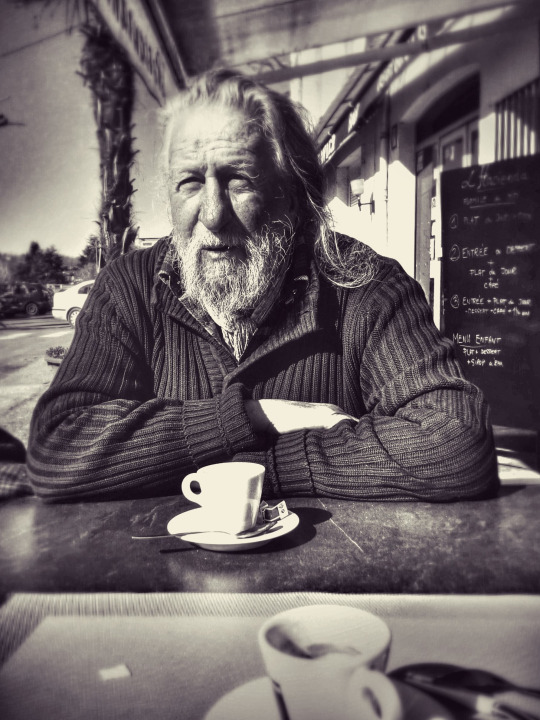
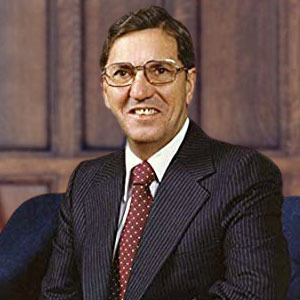
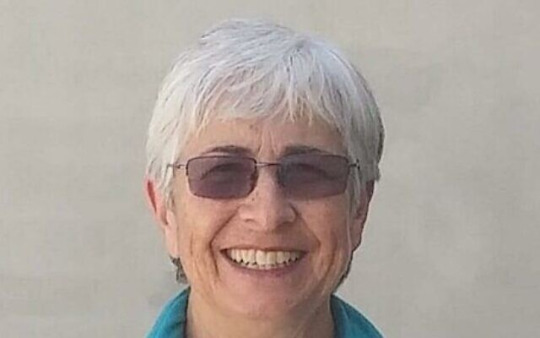

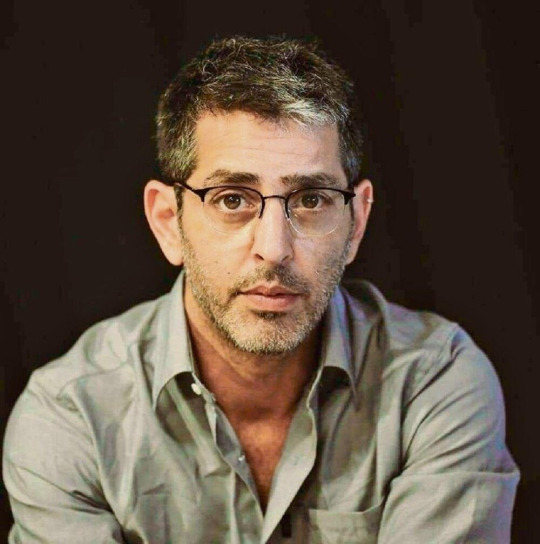


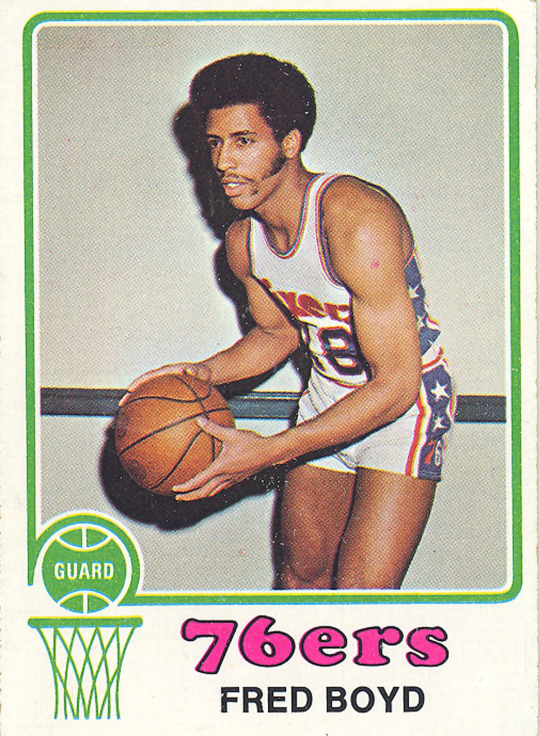






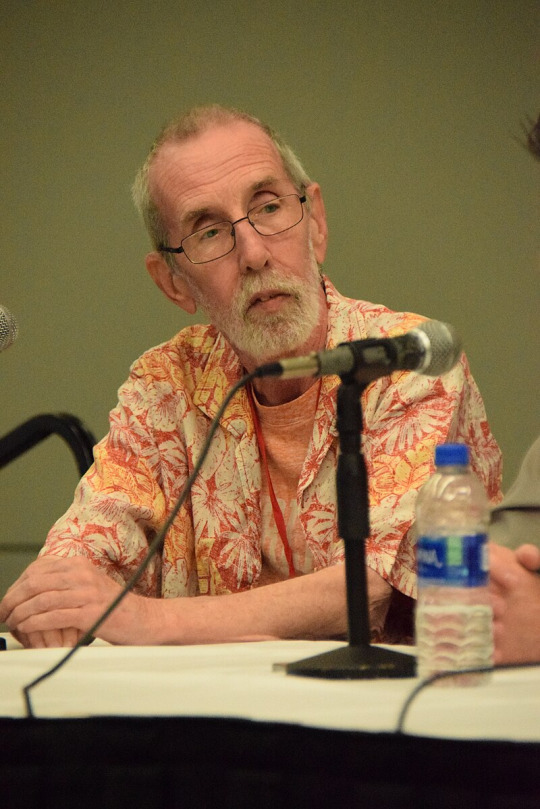
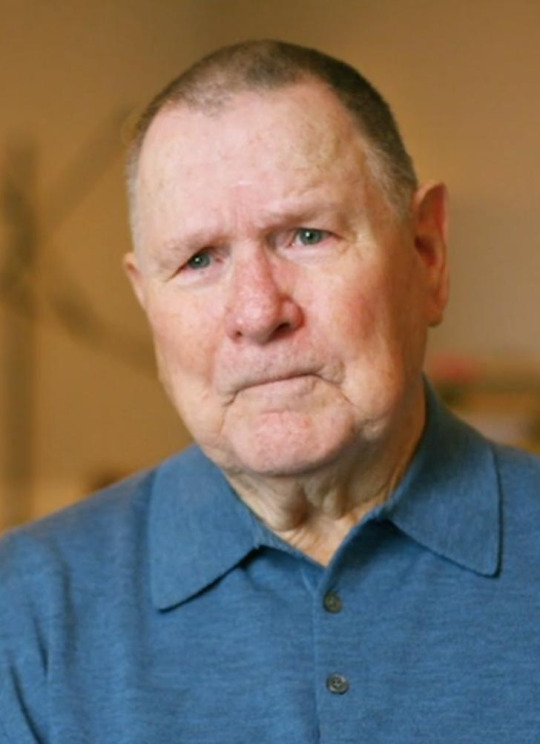
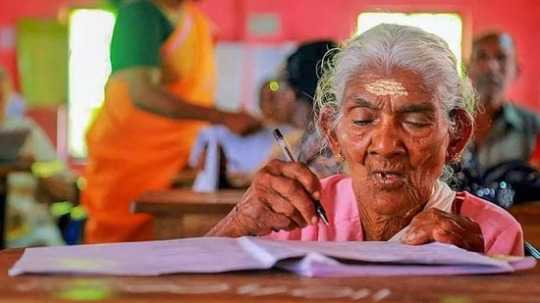

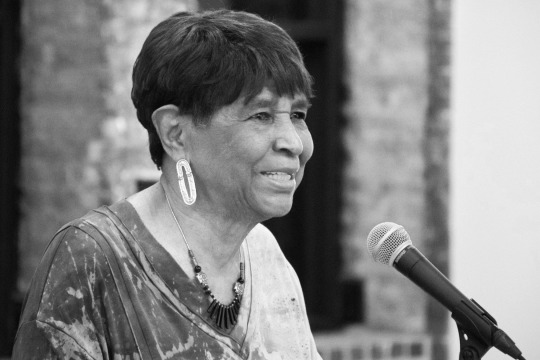
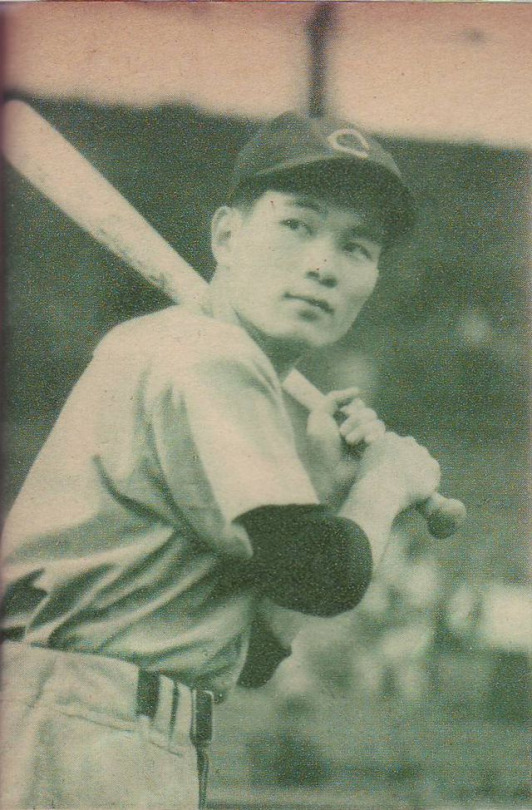
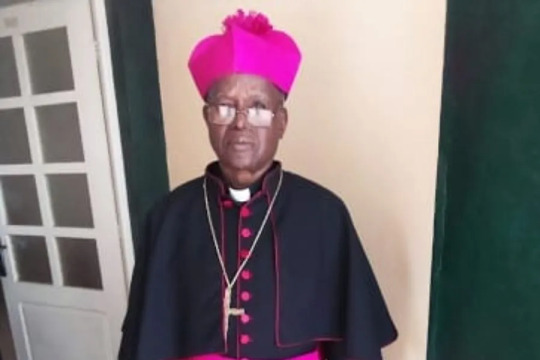






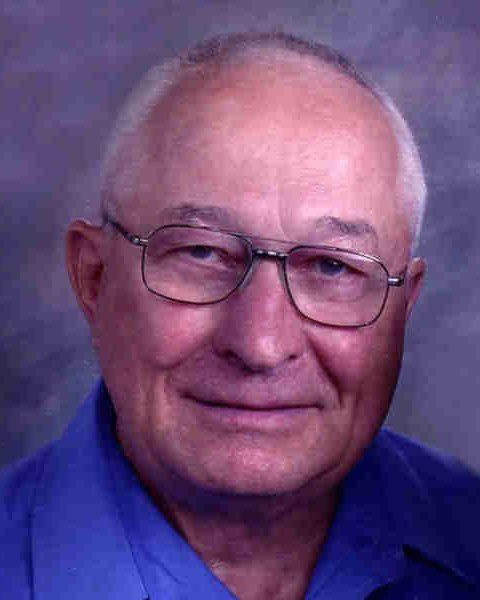


2023 In Memoriam Part 38
Dan Giraud, 77
Ted Schwinden, 98
Vivian Silver, 74
Phyllis Latour, 102
Roy Edan, 44
Shani Louk, 22
Yaniv Zohar, 54
Fred Boyd, 73
Maude Jacques, 31
Jeff Peterek, 60
Dunc Wilson, 75
Gerald DeLouise aka Burt Young, 83
Bishop Mauro Morelli, 88
Terry Dischinger, 82
Keith Giffen, 70
Brendan Malone, 88
Karthyayani Amma, 101
Jeff Burr, 60
Louise Meriwether, 100
Naka Toshio, 87
Bishop Manuel Chuanguira Machado, 73
Gen. Michael P.C. Carns, 86
Phyllis Coates, 96
Walt Garrison, 79
Rudy Isley, 84
Leo Burke, 89
Burdie Haldorson, 89
SPC4 Frank A. Herda, 76
Jaakko Ihamuotila, 83
Issam Abdallah, 37
#Religion#Tributes#Celebrities#Books#Music#France#Politics#Montana#Arizona#Canada#Manitoba#Israel#South Africa#New Zealand#Art#Germany#Sports#Basketball#Quebec#Baseball#Indiana#Michigan#Hockey#Hockey Goalies#Ontario#Honduras#Movies#New York City#New York#Brazil
1 note
·
View note
Photo

New Post has been published on https://wineauctionroom.com/report-on-end-of-year-auction-announcing-next-online-auction-starting-dec-27/
Report on End-of-Year Auction & Announcing Next Online Auction Starting Dec 27
Our End-of-Year Live auction followed by its Buy Now sale wrapped up the year last Tuesday. Thanks to our lovely wine community, our vendors and buyers for your long-time support.
Before we dive into the auction sale report, let’s take a look at the international wine market. Globally, key market indices remained flat, primarily due to ongoing cautious investor sentiment and reduced demand from Asia. The Bordeaux market has seen a notable drop in prices, with some of the most prestigious producers experiencing the biggest decline in the last quarter of 2023. However, despite these headwinds, the outlook for 2024 holds promise for investors, with emerging opportunities on the horizon. The stabilisation in pricing towards the end of the quarter also provides an enticing opportunity for wine investors.
This is reflected accordingly in local market. In our last live auction, overall wining bids set around mid estimate with few soared above high estimate. 2000 Chateau Mouton Rothschild took the highest hammer win at $1880, followed by 2003 Quinta do Noval Porto Vintage Nacional and Canadian Club Chronicles 41 Year Old Whisky (45%ABV) at $1175.
At the second tier, Rhone, Burgundy and Bordeaux played equal parts with 2010 E. Guigal La Mouline Cote Rotie selling for $1034, while 2009 Domaine Armand Rousseau Gevrey-Chambertin and 2008 Chateau Mouton Rothschild followed at $940.
Overall Bordeaux still delivered the highest total winning value in general proving its trustworthy stability in long-term investment. 1983 Chateau Latour sold for $893, 2008 Chateau Haut-Brion followed at $869.50 and 2003 Chateau Pavie sold for $611 while 1995 Chateau Pichon Longueville Comtesse de Lalande sold for $434.75.
OWC performed steadily as always, both 6-bottle lot of OWC 2014 Stonyridge Vineyard Larose, and OWC 2014 Te Mata Estate Coleraine sold for $846 and 6-bottle lot of OWC 2007 Chateau Gazin sold for $634.50.
Other highlights include, 6-bottle lot of 2001 Tenuta dell’Ornellaia selling for $2467.50, NV Jacques Selosse Initial Grand Cru Blanc de Blanc scoring $963.50, 1992 Dom Perignon Rose Vintage Brut selling for $705 and 2016 Bell Hill Pinot Noir reached $258.50.
All prices include Buyers Premium but exclude GST.
Our sincere thanks again to everyone who participated in this Live auction either in saleroom physically or via online and phone bids. Please feel free to give us feedback if there’s anything we could do to make it an even better experience for you.
Our next auction will be an online sale from 12pm, Wed Dec 27 to 7pm, Sun Jan 14.
We are often asked what wines we enjoy… we simply point to The Wine Retail Room. Whilst our range is small, it is stuffed with wines with a story to tell. Our retail store continues to be available for Christmas stocking fillers – be sure to place your orders before December 15if you’re out of town as we anticipate courier networks will be jammed. Local pickups will be available until Wednesday 20 December. wineretailroom.co.nz
0 notes
Text
06 - BEWITCHMENT
[…] during which time he honoured them with all honour, and on the fourth he got ready for them a banquet and invited them to his Palace. (1) So, Orlando cheered “I propose a toast to mirth” (2) The night was filled with laughter, music, and the rhythmic movements of the dancers. All of a sudden, I feel a connection to my dancing partner that transcends me. Fragile, vulnerable, fluid, ready to fade away with the first breath of wind. (3) I watch her, I smell her, I feel her. For a moment I feel live. But there, It […] has the form of a hard, red, pimple, with a blackish head mostly, though sometimes of a livid colour. (4) Huge. I cannot go back.
The villagers were dancing: the gentlemen condescended to dance with the country maids; but the ladies maintained their dignity. (5) Love and do what you will. (6) "I love you!" he shouted. (7) This is to love self. (8) In that moment of crisis, as the music swirled around us and the night air was filled with the intoxicating scent of blooming flowers, I made my decision.
Me dancing alone, absorbed in the reflection of my own image. I had forsaken the temptation.
1) The Book of the Thousand and One Nights Supplementary Nights, 2) Hugo, Les Miserables, 3) Serres Latour, Conversations on Science Culture and Time, 4) Pliny, Natural History Volume 5, 5) Rousseau, Collected Works of Jean-Jacques Rousseau, 6) Michelet, The History of France Vol 1, 7) Ovid, Metamorphoses, 8) Aquinas, Summa Theologica
1 note
·
View note
Photo

oc
#art#art tag#oc art#doodle#jacques latour#i wish work wouldnt fuck me this hard currently i really do
2K notes
·
View notes
Text
Philosopher Lisa Doeland wonders in 'Apocalypsofie': extinction, how do you introduce that well?

New Yorkers flee a tsunami in Roland Emmerich's film The Day After Tomorrow, 2004
In an intensely polluted world that will never get clean again, we must try to get it right. How? Philosopher Lisa Doeland comes up with an honest, searching answer in her book “Apocalypsofie”.
When I'm about ten pages into her new book “Apocalypsofie” [1], I wonder whether Lisa Doeland would have children. Whoever describes the climate crisis bluntly as an apocalypse does not have a rosy picture of the future. Why would you then even start having children?
For Doeland, an apocalyptic is not the same as a doomsayer, it soon becomes clear. The Dutch philosopher may not be an ecomodernist who puts all her hope in technological innovation, but she is not a prophet of doom either. She just wants to avoid the polarisation between doomsayers and ecomodernists with her "apocalypsophy" (that term is her invention). After all, both pessimism and optimism give us an illusion of distance: the future will be bad or good. But, Doeland subtly observes, it's not about the future, the downfall has already started. Her apocalypsophy is a manual for how we can still live in the full awareness of that harsh truth.
What is possible
“After a century and a half of industrial production, mass consumption and thoughtless discarding, the remains of this process are piling up visibly and invisibly, and instead of trying to hide them away and start with a clean slate, it is up to us to learn to live in and with the debris. How do you do that?”
Doeland hesitantly answers that crucial question in her book. It is only at the last chapter that readers get a little insight into what they have to do. Much more attention is paid in Apocalypsophie to the analysis of the problem and of wrong solutions. Where do the ruins come from? Why was the Club of Rome[2] never listened to? What fantasies lull us further into ruin? The philosopher looks for an answer dialoguing with big names of fellow philosophers such as Jacques Lacan[3], Bruno Latour[4], Jacques Derrida[5], Walter Benjamin[6], or living epigones in the current eco-movement such as Donna Haraway[7] or Andreas Malm[8].
But also lesser-known (and therefore all the more interesting) philosophy is accessible in Doeland's story, such as the work of Srećko Horvat[9] (After the apocalypse), Roy Scranton[10] (Learning to die in the anthropocene), Michael Marder[11] (Dump philosophy), Anna Tsing[12] (The mushroom at the end of the world), Val Plumwood[13] (The eye of the crocodile).
Doeland takes up the warnings of Derrida, Benjamin and Horvat: we are already living in the catastrophe, the world is already a dump, don't be fooled. She takes constructive advice from Tsing, Haraway and Plumwood (coincidentally, the female thinkers?): don't fear the future, but look around and learn to see what's possible.
Completely in line with the etymological meaning of 'apocalypse', Doeland sees the ecological crisis as a revelation: not of a grand vision about the end of 'the' world, but the revelation of the insight that many worlds have long since ended. The main appeal of this book is: don't think it's five to twelve or that we can still be saved, but look around you and see that the mass extinction (of insects and other animal species, of indigenous cultures, of pre-industrial societies ...) is taking place worldwide.
What can we do with that insight? According to Doeland, it protects us against what she calls dangerous fantasies: the energy transition, for example, or the circular economy that hides the real problem from our view with the promise of waste as a raw material. That real problem, says Doeland, is the capitalist need for eternal growth. And the circular economy only makes it bigger: 'The belief in the recyclability of things means that we no longer view waste as a problem, as the dark side of our disposable consumer society, but as part of a more or less natural cycle, so we don't have to worry too much about it.'
Undead waste
Destination is strict. Electric cars and solar panels are not a solution, they are part of the problem. Concepts such as 'energy transition' and 'green energy' continue to hide polluting processes of extraction and combustion. Batteries, plastic and car tires not only have to be produced, but also discarded after decay. This is how the machine of capitalism produces piles of waste that cannot be digested: undead waste, as Doeland calls it, huge piles of e-waste and plastic that haunt us and future generations.
Surprisingly, Doeland is equally sceptical about rewilding projects and veganism, if they are based on a false ideal of untouched nature or moral purity. After all, nature not only includes trees and oceans, but also nuclear waste under the soil and plastic in the sea. The fantasy of nature as a pristine canvas against which man can develop cultures is at the root of the capitalist exploitation of the earth.
Even so, the desire for a clear moral line between what is edible (plants) and what is not (animals) rests on a bad fantasy. All food is sacred, says Doeland together with ecofeminist Plumwood. And that all consumption of food is consumption of suffering is a thought she borrows from anarchist Alexis Shotwell[14]. Because everything on earth is so intensely intertwined with everything, people can no longer shut themselves off from all that is bad: plastic is in breast milk, lead in our blood, soy milk is produced industrially. Moral purity is an illusion.
Cloudy ethics
In an intensely polluted world that can never be made clean again, we must try to get it right. And we can do that well or less well. Unfortunately, even for Doeland, it is not always clear what that means in practice. She herself gives the example of diapers (so yes, she has children!). She opted for washable instead of disposable diapers, but is not sure whether that was the best choice. Was it worth all the energy?
“You must realise that you can never do everything right.” The answer to the question “How to live amidst the ruins?” is unsatisfying, but fair. For me, the most difficult challenge is not to keep myself ongoing confronted with the realisation of millions of climate refugees or the destroyed ecosystems and biodiversity, but rather: 'how do I raise children in this world?'
British Charlie Gardner[15], one of the founders of Scientist Rebellion[16], left the academy because he could no longer bring science to auditoriums full of young people, condemning them powerlessly to a bleak future. Lying to the next generation is not an option, so what do we tell them? The book Apocalypsophie is full of beautiful metaphors and intriguing provocations, but how do I translate them into a life with children? Shall I teach them 'how to get extincted properly', as Doeland sharply puts it? Is there still room for humour and happiness, for joie de vivre and fun? I suspect that Lisa Doeland assumes so, because she has chosen parenthood just like I did. But frankly talking? I'm not very sure.
Source
Katrien Schaubroeck, Filosofe Lisa Doeland vraagt zich in ‘Apocalypsofie’ af: uitsterven, hoe doe je dat goed?, in: De Strandaard, 5-08-2023, https://www.standaard.be/cnt/dmf20230803_94888668
[1] Lisa Doeland: Apocalypsofie. Over recycling, groene groei en andere gevaarlijke fantasieën. (Apocalypsophy. About recycling, green growth and other dangerous fantasies) , Ten Have, 2023 https://www.uitgeverijtenhave.nl/boek/apocalypsofie/
[2] The Club of Rome is a nonprofit, informal organization of intellectuals and business leaders whose goal is a critical discussion of pressing global issues. The Club of Rome was founded in 1968 at the Accademia dei Lincei in Rome, Italy. It consists of one hundred full members selected from current and former heads of state and government, UN administrators, high-level politicians and government officials, diplomats, scientists, economists, and business leaders from around the globe. It stimulated considerable public attention in 1972 with the first report to the Club of Rome, The Limits to Growth. Since 1 July 2008, the organisation has been based in Winterthur, Switzerland.
[3] Jacques Marie Émile Lacan (13 April 1901 – 9 September 1981) was a French psychoanalyst and psychiatrist. Described as "the most controversial psycho-analyst since Freud", Lacan gave yearly seminars in Paris, from 1953 to 1981, and published papers that were later collected in the book Écrits. His work made a significant impact on continental philosophy and cultural theory in areas such as post-structuralism, critical theory, feminist theory and film theory, as well as on the practice of psychoanalysis itself.
[4] Bruno Latour (22 June 1947 – 9 October 2022) was a French philosopher, anthropologist and sociologist.He was especially known for his work in the field of science and technology studies (STS).After teaching at the École des Mines de Paris (Centre de Sociologie de l'Innovation) from 1982 to 2006, he became professor at Sciences Po Paris (2006–2017), where he was the scientific director of the Sciences Po Medialab. He retired from several university activities in 2017.He was also a Centennial Professor at the London School of Economics.
[5] Jacques Derrida (15 July 1930 – 9 October 2004) was an Algerian-born French philosopher. He developed the philosophy of deconstruction, which he utilized in numerous texts, and which was developed through close readings of the linguistics of Ferdinand de Saussure and Husserlian and Heideggerian phenomenology. He is one of the major figures associated with post-structuralism and postmodern philosophy although he distanced himself from post-structuralism and disowned the word "postmodernity"
[6] Walter Bendix Schönflies Benjamin (15 July 1892 – 26 September 1940) was a German Jewish philosopher, cultural critic, and essayist. An eclectic thinker who combined elements of German idealism, Romanticism, Western Marxism, Jewish mysticism, and Neo-Kantianism, Benjamin made enduring and influential contributions to aesthetic theory, literary criticism, and historical materialism. He was associated with the Frankfurt School, and also maintained formative friendships with thinkers such as playwright Bertolt Brecht and Kabbalah scholar Gershom Scholem. He was also related to German political theorist and philosopher Hannah Arendt through her first marriage to Benjamin's cousin Günther Anders.
[7] Donna J. Haraway is an American Professor Emerita in the History of Consciousness Department and Feminist Studies Department at the University of California, Santa Cruz, and a prominent scholar in the field of science and technology studies. She has also contributed to the intersection of information technology and feminist theory, and is a leading scholar in contemporary ecofeminism. Her work criticizes anthropocentrism, emphasizes the self-organizing powers of nonhuman processes, and explores dissonant relations between those processes and cultural practices, rethinking sources of ethics
[8] Andreas Malm (born 1976 or 1977) is a Swedish author and an associate professor of human ecology at Lund University. He is on the editorial board of the academic journal Historical Materialism, and has been described as a Marxist. Naomi Klein, who quoted Malm in her book This Changes Everything, describes him as "one of the most original thinkers on the subject" of climate change.
[9] Srećko Horvat (born 28 February 1983) is a Croatian philosopher, author and political activist. The German weekly Der Freitag called him "one of the most exciting voices of his generation" and he has been described as a "fiery voice of dissent in the Post-Yugoslav landscape". His writing has appeared in The Guardian, Al Jazeera, Der Spiegel, Jacobin, Newsweek and The New York Times.
[10] Roy Scranton (born 1976) is an American writer of fiction, non-fiction, and poetry. His essays, journalism, short fiction, and reviews have appeared in The New York Times, Rolling Stone, The Nation, Dissent, LIT, Los Angeles Review of Books, and Boston Review. His first book, Learning to Die in the Anthropocene was published by City Lights. His novel War Porn was released by Soho Press in August 2016. It was called "One of the best and most disturbing war novels in years" by Sam Sacks in The Wall Street Journal. He co-edited Fire and Forget: Short Stories from the Long War. He currently teaches at the University of Notre Dame, where he is the director of the Environmental Humanities Initiative
[11] Michael Marder is Ikerbasque Research Professor of Philosophy at the University of the Basque Country, Vitoria-Gasteiz. He works in the phenomenological tradition of Continental philosophy, environmental thought, and political philosophy.
[12] Anna Lowenhaupt Tsing (born 1952) is an American anthropologist. She is a professor in the Anthropology Department at the University of California, Santa Cruz. In 2018, she was awarded the Huxley Memorial Medal of the Royal Anthropological Institute.
[13] Val Plumwood (11 August 1939 – 29 February 2008) was an Australian philosopher and ecofeminist known for her work on anthropocentrism. From the 1970s she played a central role in the development of radical ecosophy. Working mostly as an independent scholar, she held positions at the University of Tasmania, North Carolina State University, the University of Montana, and the University of Sydney, and at the time of her death was Australian Research Council Fellow at the Australian National University.[5] She is included in Routledge's Fifty Key Thinkers on the Environment (2001).
[14] Alexis Shotwell (b. 1974) is a Canadian philosopher, currently employed as Professor in the Department of Sociology and Anthropology at Carleton University in Ottawa, where she is cross-appointed with the Pauline Jewett Institute of Women's and Gender Studies and the Department of Philosophy. Educated at University of California, Santa Cruz (PhD), Dalhousie University (MA) and McGill University (BA), Shotwell has also taught at Laurentian University.
[15] Dr. Charlie Gardner’s professional identity cannot be summed up by a simple job title: he is, simultaneously, a lecturer and researcher in conservation science at the University of Kent, a practitioner and an activist with Extinction Rebellion. To him, these are not separate roles. They strengthen each other in his determination to align science with activism in order to save our planet. We spoke with Charlie about his unique approach to science and the multiple ways in which he uses his work life to make a real-world impact for all our sakes.
[16] Scientist Rebellion is an international scientists' environmentalist group that campaigns for degrowth, climate justice and more effective climate change mitigation. It is a sister organisation to Extinction Rebellion. It is a network of academics that tries to raise awareness by engaging in non-violent civil disobedience.
0 notes
Text
Félix Bracquemond was twentysix years old at the time, darkly bearded, a stocky man with honest, wideset eyes. He was a complex personality: he could be arrogant, dogmatic, fiery, yet extremely charming. He was also multi -talented and became a central figure in the Parisian art scene. From his youth, when he was an assistant to a professional lithographer, he developed into a firstrate draughtsman, a talent he put to use as both a print-maker and a ceramist. While Berthe and Edma were still at school he had worked alongside Charles Méryon, a brilliant but much undervalued etcher, who was trying to resurrect this neglected art form. Bracquemond's interest in etchings grew into an ambition to exploit the market with fine prints (belles épreuves) and he was to be co-founder of the Society of Etchers. Later his career took a different direction when he became artistic director of the Haviland Porcelain Works. But at this time — the late 1850s — he lived by taking small commissions, such as the frontispieces of books. He decorated some works of the novelist Champfleury, and through him came to know a number of the pro-Realist critics and writers in Paris. At this time his friends included the Goncourt brothers, Gavarni, Alphonse Legros, Millet, Corot and Edouard Manet, as well as Fantin-Latour, who remained a close friend all his life through whom he would shortly meet Edgar Degas .Although he was a working artist, Bracquemond still found time to visit the Louvre. He shared with Fantin (who was three years his junior) a love of Delacroix, Courbet and the seventeenth-century Spanish and Dutch masters. But he was one of the first artists in France to be seduced by oriental art. From the moment in 1856 when he came across some Hokusai rejects in Delátre's bookshop in the rue Saint-Jacques, he was inspired by the fine draughtsmanship and unusual composition of Japanese prints and woodcuts. He admired the landscape design and colour of Hokusai and Hiroshige, and the realism of earlier masters like Utamaro, whose prints of everyday life were “mirrors of the passing world”. Suggestiveness, the lack of irrelevant detail, the fresh combination of colour, eve appeal — all these qualities anticipated the future direction of French art: Impressionism.
Japonisme grew in popularity after 1862 with the opening of a specialist business in the rue de Rivoli. Bracquemond, Fantin and their friends, Whistler, Manet, Degas, Stevens and James Tissot, became voluble exponents of the compositional techniques of oriental art. With certain literary critics — Baudelaire, Zacharie Astruc, Philippe Burty, Emile Zola and the Goncourts - they were patrons of the shop known paradoxically as La Porte Chinoise. Berthe caught hints of this new exotica. She learned about the artistic implications in the course of the 1860s, noting that “only Manet and the Japanese can indicate a mouth, eyes, a nose with a single stroke of the brush, so concisely that the rest of the face models itself. However, similar remarks were to be made of her work, suggesting that she too had these eclectic tendencies
1 note
·
View note
Text
: Thursday 17 May 1838
7
2
A-‘s cousin came this morning soon after nine a week too soon fine morning F56 ½° at 7 ½ am wrote the whole of the last page and breakfast at 9 ¼ in ½ hour and had talkathon with the washerwoman whom I quietly put into as much rage as she dared shew – would not pay her bill – but said I would settle it with the lady of the house or with monsieur she wanted the bill back again but this she would not give up – had just written so far at 10 10 according to the ‘almanach administratif et statistique et de la cour d’appel de Liège et de son Ressort. 43me année. 1838. Liège. Imprimerie de Jacques Desoer Libraix Place St. Lambert, no.774’ vid. p. 157 governor M. le baron Charles H. A. J. Vandensteen de Jehay, Mt. St. Martin, no.614. and vide p. 211 population de la ville de Liège 1 January 1837 = 59.363 ames – or population par quartier Sud, 18,251 ; Nord 14,817, Est 14,606 ; Ouest 11,689. and vide p. 279 to 284 inclusive account of the anniversary – p. 282 Galerie Zoologique ‘pourra devenir précieux par l’achat du célèbre cabinet de [fer] M. Schmerling’ – M. D. – took a commissionaire and George and A- and I went out (walked) at 10 35 – 1st to Collardin’s took back the 2 plans of Liège 4/. and got in exchange a German French and English vocabulary 4/. and a Belgian Livre de poste 2/50 – left these at home and then went for 10 minutes to the cathedral (St. Paul) - neat, clean, marble skirted, handsome remarkably comfortable church – with handsome painted window east and two partly painted in the transept north and south a German had just been at the top of this church – then to St. Jacques at 11 and sent George and the commissionaire home for Oddy – old gothic church very neat and interesting and handsome founded by bishop Baldric in 1014 – the cathedral ceiling painted in a running pattern, that of St. Jacques much handsome – good deal of [?] imitating the effect of guilding – the church undergoing great repairs – the man who shewed us about said to the 300,000 francs? of which government gave 25,000 fr. but what was that – waited for the servants ½ hour – then 5 minutes longer and off to Les mineurs at 11 35 and the priests’ college adjoining the bishops’ palace – 140 etudiàns, at 400fr. per annum – In the corridors an excellent gravure of Rome, and chronological gravure of the heads and dates of all the popes, all the Kings of Spain, and all the Roma emperors – saw the dining room kitchen and lecture room – good, but very plain rooms, nothing to see – the bishops’ palace not shewn a merely pretty good private house – the church (all the same corps de bâtiment) neat clean very white and pretty and handsome enough – all the churches here less than usual encumbered with Roman catholic frippery – off from here at 1 35 – ½ hour at a booksellers in passing and bought several little things, not dear – then up to the church of St. Martin more striking in exterior and like commanding situation than worth visiting for its interior – pretty little oak-carved pulpit some pictures by Latour, and some tolerable little basso-relievo marble medallions by Delcour who sculptured the foundation (Virgin and child on pedestal water from the mouths of 4 lions into as many stone troughs) in the Place de St. Paul – from St. Martins’ went to the adjoining barrière and looked down upon the barrière St. Marguerite by which we had entered and close to which was our coal-pit – fine view on this side – but magnificent one from the garden of the cafè de belle vue looking down to the other side the hill, upon Liège and its fine river and voisinage – vineyards and gardens and long chimneys but very little smoke to be seen from houses or engines – our commissionaire said the coal of Liege did not make much smoke – true there is not much – a large 100 horse engine does not make more (as far as we have seen) than a common kitchen fire in England! How is this? – Delighted with the view – sent the servants home to dinner before 2 – ourselves back at 2 20 – got down the hill by a near little narrow way along the Derrière l’Eglise de St. Jean and soon at the theatre and at home – A- tired but lay on the sofa – made herself some tea as yesterday and seemed quite refreshed again in about an hour – I read the almanach de Liège lent us by our host and then till 4 wrote all but the 1st 5 lines of today – A- and I went out at 4 5 – bought pretty blue silk pincushion topped boite aux gants 12/. – then sauntered along the streets to the university – sought out our portière – she was with a party of French went with them to the salle (lecture room) – very large good handsome circular squared room – benches en amphithéâtre for the étudiants, and above a colonade gallery – very good effect – to the cabinet d’histoire naturelle mineralogy and geology and in the cabinet de physique et anatomie – mathematical instruments and anatomical preparation everything very nice – the cabinet of M. le docteur Schmerling not yet purchased but les administrateurs sur le pied de l’acheter – among the coal fossil vegetable remains saw one from la mine de l’espérance which it seems is at Seraing and belongs to Mr. Cockerill and the woman as I understood said it was deeper than the houillère of Sainte Marguerite – an hour at the university then sauntered along the quai to the post the singular looking old brick building that Mt. de Piète – went up one of the several little streets (opening on to the Quai) not 4ft. wide I should guess about 3ft. 8in. wide according to my parasol returned by the marché and called on booksellers Place St. Lambert and bought the Liège almanac (vid. line 5 of today) etc. – home at 7 5 dinner about 7 ¼ in an hour – at 9 ¼ went down to see Mr. Mathiolis’ cellars, kitchen baths, and lastly his stable to see a Hannover horse (aetatis 9) that he played all sorts of coaxing tricks – with to shew how quiet it was – an hours’ business – his fruit cupboard and foyer de cuisine the best worth seeing things – A- tired – it was too much for her – fine day – F59° now at 10 ¾ pm – fine day – rain from about 8 am
the portiere at the university said how cold it was and that there was snow here on Tuesday morning at 6 am
SH:7/ML/E/21/0102
A- lay on the sofa poorly busy getting the boiler to heat water and undressing her with A- heating water or one thing or other till 12 20 – then leaving her in bed, sat looking over the books bought today till one tonight – then hearing her crying went to her and gave her some cherry brandy she said her head and neck were bad she wants more than I can do for her a good strong fellow
1 note
·
View note
Text
Les nouveautés de la semaine (23/01/2023)
A la une : La disgrâce des statues : essai sur les conflits de mémoire, de la Révolution française à Black lives matter / Bertrand Tillier
Cote de rangement : NB 1153 .P65 T 265930 / Domaine : Culture

"Depuis la Révolution française au moins et jusqu'au mouvement Black Lives Matter, les sociétés contemporaines n'ont cessé de s'en prendre aux monuments et statues de grands hommes érigés sur la place publique par des détournements, déboulonnages ou destructions divers. De la colonne Vendôme en 1871 aux figures contestées de l'esclavagisme et du racisme, en passant par les effigies de Staline ou de Lénine après la chute du communisme, les statues de dictateurs abattues lors des Printemps arabes, cette mise à mal interroge l'anthropologie de ces répertoires d'action, les discours historiques que ces monuments cristallisent et la fabrique d'événements désormais mondialisés." - Quatrième de couverture
---------------------------------------
Sciences politiques
United Kingdom / Adrian Bingham
Cote de rangement : DA 589 .7 B 265942
Poutine, l'Otan et la guerre : sur les causes et les enjeux d'une sale guerre en Ukraine / Jacques Fath
Cote de rangement : DK 508 .852 F 265937
Voices of liberation / Patrice Lumumba
Cote de rangement : DT 658 .2.L85 P 265939
Une jeunesse engagée : enquête sur les étudiants de Sciences Po, 2002-2022 / Martial Foucault, Anne Muxel
Cote de rangement : JA 88 .F7 F 265931
The pursuit of equality in the West / Aldo Schiavone
Cote de rangement : JC 575 S 265947
Politics and society in contemporary Europe : a concise introduction / Stephen Wright
Cote de rangement : JN 13 W 265941
Le monde de demain : comprendre les conséquences planétaires de l'onde de choc ukrainienne / Pierre Servent
Cote de rangement : JZ 1242 S 265935
---------------------------------------
Gestion
The logic of professionalism : work and management in professional service organizations / Johan Alvehus
Cote de rangement : HD 31 .2 A 265943
State capitalism : why SOEs matter and the challenges they face / Lalita Som
Cote de rangement : HD 3580 S 265940
Métiers de rue : observer le travail et le genre à Paris en 1900 / Juliette Rennes
Cote de rangement : HD 6060 .65.F82 R 265929
Smart growth : progression personnelle, développement des talents / Withney Johnson
Cote de rangement : HF 5549 .5.C53 J 265925
---------------------------------------
Sociologie
Permis de séjour / André Burguière
Cote de rangement : DS 135 .F82 B 265923
Social research matters : a life in family sociology / Julia Brannen
Cote de rangement : HQ 728 B 265946
Genres et militantismes : pluralité des formes de mobilisations féministes et LGBTQ+ / ouvrage collectif
Cote de rangement : HQ 1075 G 265936
---------------------------------------
Communication
La parole altérée : considérations inquiètes sur l'expression publique / François Taillandier
Cote de rangement : P 96 .L342 T 265934
---------------------------------------
Philosophie
Digital humanism : a philosophy for 21st century digital society / Christian Fuchs
Cote de rangement : B 821 F 265945
Habiter la terre : entretiens avec Nicolas Truong / Bruno Latour
Cote de rangement : B 2433 .L33 L 265924
L'âge de la résilience : la Terre se réensauvage, il faut nous réinventer / Jeremy Rifkin
Cote de rangement : BF 698 .35.R47 R 265933
Le fil de Gramsci : politique et philosophie de la praxis / André Tosel
Cote de rangement : HX 289 .7.G73 T 265928
---------------------------------------
Finance
Basic statistics for risk management in banks and financial institutions / Arindam Bandyopadhyay
Cote de rangement : HG 1615 B 265938
---------------------------------------
Santé
Wellness culture : how the wellness movement has been used to empower, profit and misinform / Stephanie Alice Baker
Cote de rangement : RA 427 .8 B 265944
Vivre heureux longtemps : combien ça coûte ? / Pierre Pestieau et Xavier Flawinne
Cote de rangement : RA 564 .8 P 265932
---------------------------------------
Édition
Aux origines de la pop culture : le Fleuve noir et les Presses de la cité au cœur du transmédia à la française, 1945-1990 / Loïc Artiaga, Matthieu Letourneux
Cote de rangement : Z 305 .F64 A 265927
---------------------------------------
Économie
Capital et idéologie : d'après le livre de Thomas Piketty / Claire Alet, Benjamin Adam
Cote de rangement : HM 821 P 265926
---------------------------------------
Tous ces ouvrages sont exposés sur le présentoir des nouveautés de la BSPO. Ceux-ci pourront être empruntés à domicile à partir du 6 février 2023.
#Culture#SciencesPolitiques#Gestion#Finance#Sociologie#Communication#Philosophie#Santé#Edition#Economie
0 notes
Text
2005 pichon baron

#2005 PICHON BARON HOW TO#
#2005 PICHON BARON MANUAL#
#2005 PICHON BARON PC#
Over the space of a few years, the grand vin of Pichon Longueville Baron has established itself as one of the best crus of Pauillac. The second wine, made of young vines, is nowadays called Les Griffons. Les Tourelles de Longueville, formerly the second wine, has become a separate cru. This property's wines are nowadays considered amongst the most renowned of Pauillac.
#2005 PICHON BARON MANUAL#
Total destemming is done though manual harvesting. Cabernet Sauvignon reigns indisputably in the vineyard of Pichon Baron, carefully managed by the team of Jean-René Matignon, the domaine's technical director. A significant renovation programme of the château, the wine cellars and the technical installations of Pichon-Longueville followed. It was managed by their descendants for the next fifty years and it was a Sleeping Beauty which the company AXA Millésimes purchased in 1987. The domaine belonged to the Pichon family until 1933 when it was then sold to the Bouteiller family. The dwelling itself, inspired by the Château d'Azay le Rideau, was built in 1851 by Raoul. Classified as a Second Cru in 1855, the property was divided in favour of a succession and the vinified wines separately from 1860 : Raoul, the only surviving son of the Baron Joseph, therefore takes the head of the current Pichon Longueville Baron, often nicknamed « Pichon Baron »,whilst his daughter Virginie, the wife of the count of Lalande, received the other part of the property, hence the addition : « Comtesse de Lalande ». Produced under the leadership of Jacques de Pichon, the Baron of Longueville, the wines follow in the footsteps of those of Latour at the start of the 18th century. Planted with vines since the end of the 17th century, it achieved almost instant renown. The vineyard of Pichon Longueville Baron extends over the exquisite land of Garonne gravel to the south of the appellation on the high plateau which is a transition between the commune of Pauillac and that of Saint-Julien. Grands crus, older vintages, large formats, Champagne, whiskies, cognacs, armagnacs, rare wines, or simply a good bottle More info With a few simple clicks, the iDealwine e-card gives your loved ones the chance to spend their gift voucher as they wish on the iDealwine website (and nowhere else). If you need a place to store your wine, you're in the right place, with our all-inclusive, simple, and digitalised solution.
#2005 PICHON BARON HOW TO#
Not enough time? Not sure how to navigate thousands of wines to pick out the right ones? Our wine consultants are here to help you put together your own bespoke cellar. It's our way to thank you for your trusting us. Meursault Clos des Ambres Arnaud Ente 2014 at 04:53:34 pm | Paris time €680Īt every stage of your experience on our site, iDealwine is delighted to offer you a great selection of benefits. Gewurztraminer Sélection de Grains Nobles Eichberg Scherer 5 at 04:58:42 pm | Paris time €45Ĭhâteau Sociando Mallet 1990 at 04:53:52 pm | Paris time €160 Muscat Grand Cru Kirchberg Kientzler 2014 at 05:00:07 pm | Paris time €28
#2005 PICHON BARON PC#
10:30 | PC - Non French Wines 2006-2015īarolo DOCG Pia Cascina La Badia 1967 at 05:12:58 pm | Paris time €13īolgheri DOC Sassicaia Tenuta San Guido 2010 at 05:09:26 pm | Paris time €420.
On the contrary, it is pure Pauillac, with that purity of blackcurrant that characterizes the terroir, plenty of acidity, almost perfect balance and a little held back that can be tasted well into the finish. In short I love the wine, but I do not find a New World ripeness and opulence. I have had this wine on multiple occasion, it was on my list of best buys when I tasted in barrel, and I purchased a case of it on my return, and recently bought an Imperial at auction. If you want a slightly less ripe style (not austere by any means but a more classic style) go for the 00 - another great PB which has the stuffing to last a long time. For the pundits who might criticize this wine as too new world I concur - it is a bit new world - it could pass for a CS blend from Rutherford - for me this is not a bad thing - in fact it is a good thing - This is a very well made wine and one I am happy to own - despite having a new world feel I think it will age effortlessly. Finished the bottle off tonight - gained a bit of weight overnight (vacuvin).

0 notes